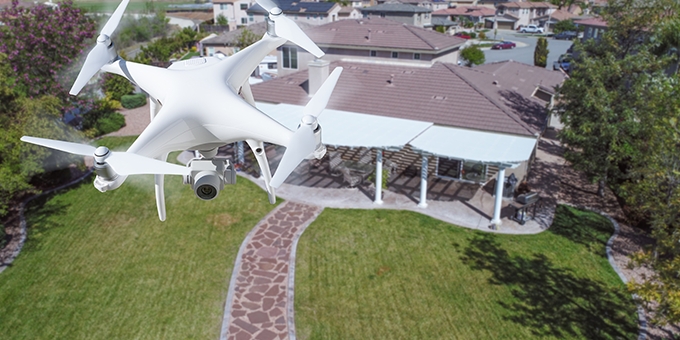To legally use a drone, the pilot must be 16 years of age or older and have an FAA UAV operator’s certificate (per Part 107). Operating a drone can present a real and significant threat to life and property.
 Real Estate Drones Are Here to Stay but Guidelines Need to Be Followed
Real Estate Drones Are Here to Stay but Guidelines Need to Be Followed

Contributed by | Gavop
Unmanned Aerial System (UAS), more commonly known as Drones, in real estate, add value to home sellers, buyers, and real estate agents. Benefits include creating a buzz on listing, and also helping in faster closing of deals. However, the Federal Aviation Administration (FAA) has put forth guidelines and regulations for individuals and businesses operating drones for commercial purposes. Gavop’s analysis of drones for real estate listing highlights some of the most important guidelines under “the small UAS rule” (14 CFR part 107). To legally use a drone, the pilot must be 16 years of age or older and have an FAA UAV operator’s certificate (per Part 107). Operating a drone can present a real and significant threat to life and property. In the US, you cannot fly a drone heavier than 55 lbs without a special FAA exemption. Drone pilots must follow FAA regulation, which also includes a limit on maximum altitude and permissible groundspeed. Drones may not be operated over people without their written permission unless they are located under a covered structure or inside a stationary vehicle that would provide reasonable protection in the event of an accident. Public safety is paramount to those operating drones and those who fail to comply with FAA rules and regulations can result in penalties and jail time in certain cases.
.jpg)
-
Drone Weight: You cannot fly a drone heavier than 55 lbs in the US without a special FAA exemption
-
Maximum Altitude: Drone pilots must follow FAA guidelines, which include flying no higher than 400 ft
-
Speed Limit: Maximum permissible groundspeed is 100 mph (87 knots)
-
Flying Over People: Drones may not be operated over people without their written permission unless they are located under a covered structure or inside a stationary vehicle that would provide reasonable protection in the event of an accident
-
Day-Light Only: Daylight-only operations, or civil twilight (30 minutes before official sunrise to 30 minutes after official sunset, local time) with appropriate anti-collision lighting
-
Safe Operating Conditions: The pilot must complete a pre-flight checklist and inspection of the drone to ensure it is in good condition to ensure safe flying
The content & opinions in this article are the author’s and do not necessarily represent the views of RoboticsTomorrow
Comments (0)
This post does not have any comments. Be the first to leave a comment below.
Featured Product

